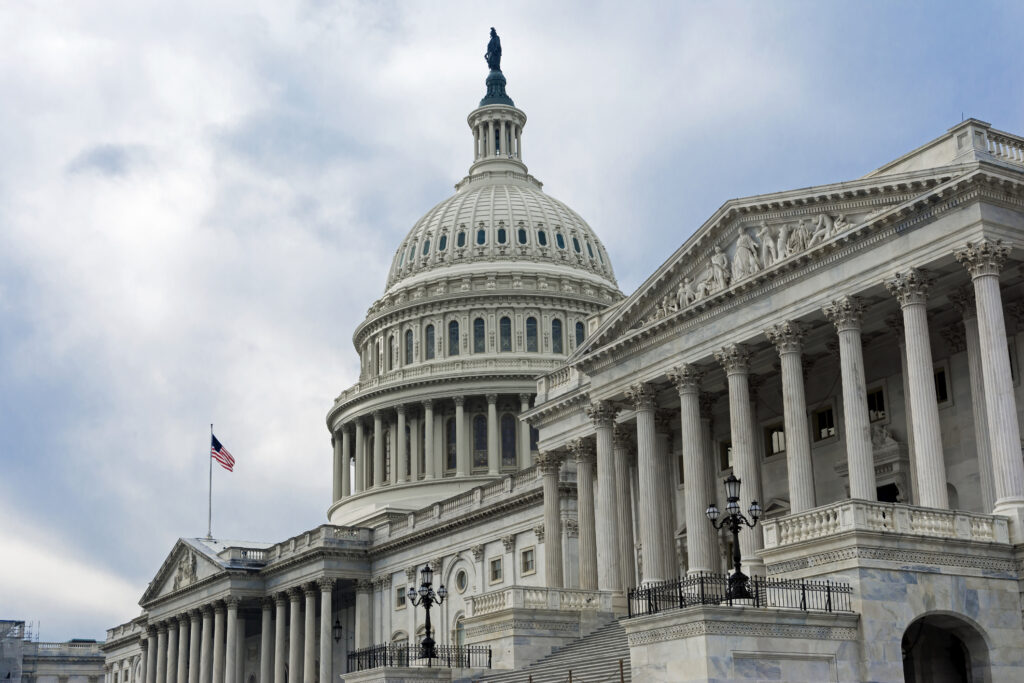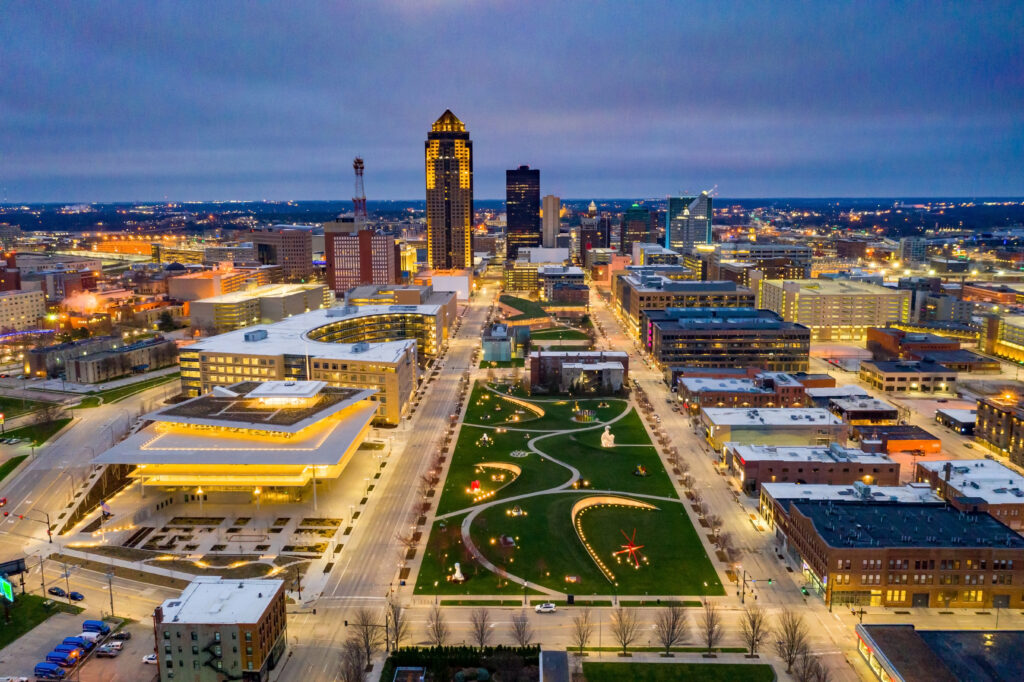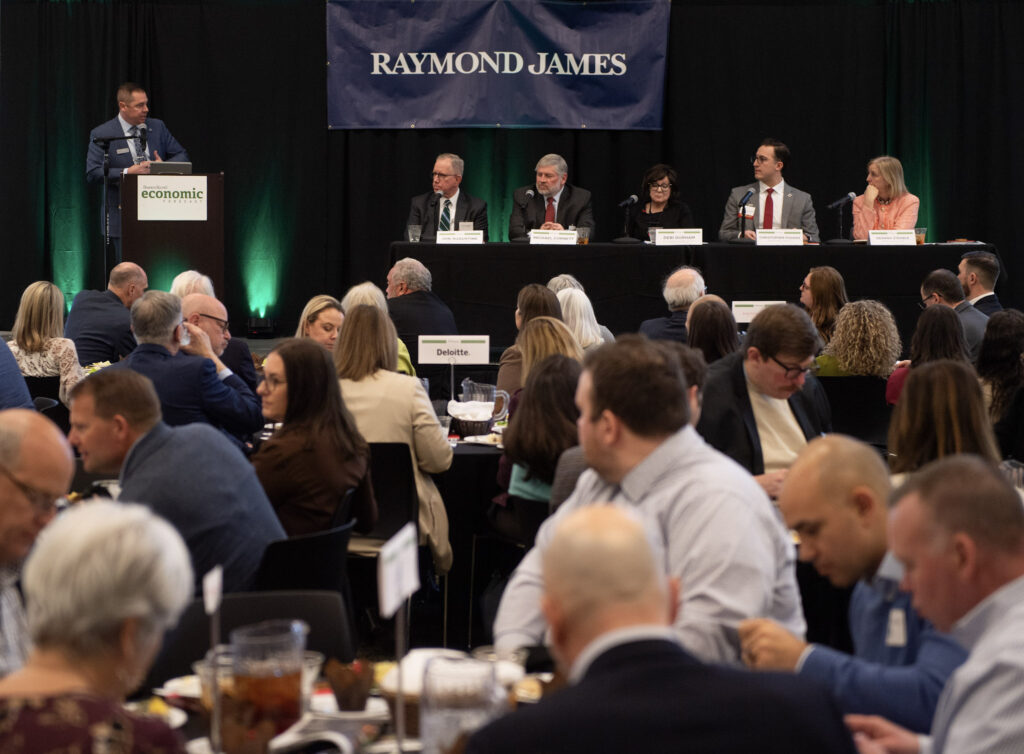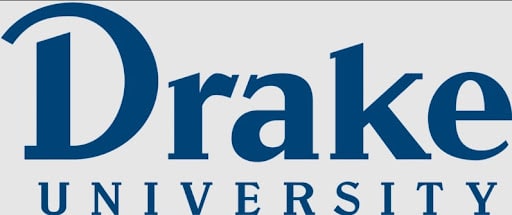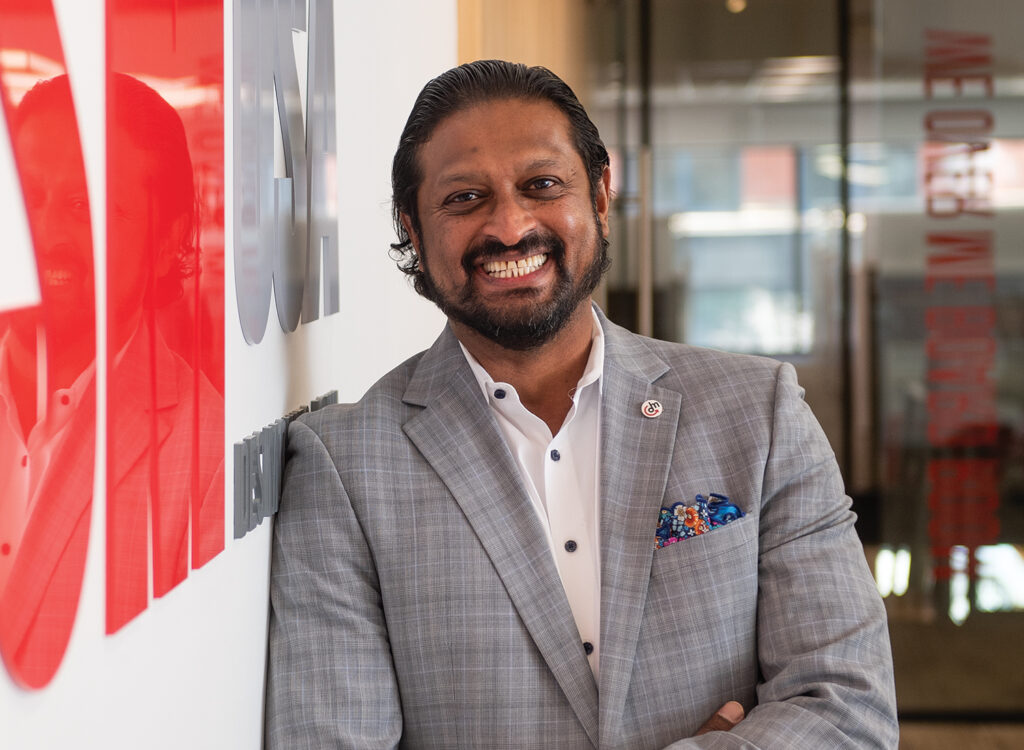All eyes on Des Moines
The national spotlight will shine brightly on Central Iowa next year. How should Greater Des Moines business leaders capitalize on the attention to change national perceptions about our city?

MEGAN VERHELST Jul 3, 2015 | 10:00 am
23 min read time
5,408 wordsBusiness Record Insider, Economic Development, Sales and MarketingIn 2016, the eyes of the nation will be on Greater Des Moines, not once, but twice.
On Feb. 1 and during the weeks and months leading up to it, national news media, politicos and presidential candidates will descend on Iowa for the Republican and Democratic caucuses. Every four years, the caucuses give the state a chance to be front and center, and already many candidates — and the media hordes that follow them — are traversing the state.
In 2012, the Republican caucuses brought close to 1,500 media personnel to the state, according to figures provided by the Greater Des Moines Convention and Visitors Bureau. When everyone went home, they left a $17 million economic impact as a thank-you to our area. With both major political parties holding a caucus in 2016, Iowa could see anywhere from 3,000 to 5,000 members of the news media here.
A month later, March will bring a bit of “Madness” to the city. On March 17 and 19, Des Moines will host eight teams for rounds one and two of the NCAA Men’s College Basketball Tournament, drawing fans and basketball enthusiasts alike to Wells Fargo Arena. This is the first time Des Moines has hosted the collegiate tournament, and CVB officials are anticipating approximate attendance of 60,000 to the games.
New visitors and media attention mean massive opportunities for Des Moines to put its best foot forward and showcase what the city has, what it offers both visitors and residents, and what the city wants to resonate with a national audience. Des Moines has made great strides in the last 15 years in becoming an attractive, vibrant community, and business leaders are eager to show off the city.
But what will East or West Coasters see on television when they watch a caucus report by national news media? Corn? Barns? Flat expanses of country? Or will they see a culturally vibrant city, the downtown Des Moines skyline and a state filled with communities harboring hidden gems?
For us in Central Iowa, knowing how others perceive Des Moines is an important component to showcasing the city and what it offers. While many who hail from other parts of the country have an opinion, most Greater Des Moines business leaders are familiar with those perceptions. And, most important, they have plans in place to show those individuals sides of Des Moines they perhaps never considered.
Perceptions of Des Moines and Iowa
Dig back into the national archives of media’ reports from the 2004 Iowa caucuses and you’re liable to see many shots of cornfields, silos, cows and similar tokens of Iowa’s agricultural heritage.
Those were the money shots for national media then, said Tiffany Tauscheck, chief communications officer with the Greater Des Moines Partnership. During the 2008 and 2012 caucuses, Tauscheck worked for the CVB as vice president of marketing and community development. During her time there, it wasn’t uncommon to field questions from reporters wondering how to get a shot of a John Deere tractor with the Des Moines skyline in the background.
“My canned response was, ‘Sure, let me go ahead and Photoshop that for you.’ We want to embrace elements of the ag community because it’s part of our state fabric, but when you’re talking about Greater Des Moines, we want to showcase the city,” Tauscheck said. “I think a lot of national media envisioned standing on the Iowa Capitol stairs surrounded by pigs.”
That perception also showed up in a survey of Business Record readers. We asked readers not originally from Des Moines what their perceptions were of Des Moines and Iowa before they moved here.
Country. Flat. Dull. Void of culture. A middle-of-nowhere corn state. Full of folks in bib overalls with buckwheat in their mouths. Their words, not ours.
Some had no perception at all because they didn’t realize Des Moines existed.
More than 60 Greater Des Moines transplants responded to our call for perceptions. See a sampling of more perceptions on Page 12.
In 2012, the CVB hired a local agency and research firm to help the organization identify both its brand and the city’s brand. Interviews and surveys were conducted among local chamber leaders, CVB partners and board members, but also with visitors to the city, a mix of those who had visited before and others who had not.
The CVB noted that before the 2012 study, they thought Greater Des Moines had no brand or image. But thanks to the study, they learned those who had visited thought of Des Moines as a city with culture. People who had not visited before thought of it as an agriculture town. The conclusion of the report was that a gap exists between perception and reality.
One of the organizations tasked with closing that gap is the Greater Des Moines Partnership, which has an extensive marketing and outreach strategy to teach both national and international audiences about the city and to make sure Des Moines is on their radars.
Jay Byers, CEO of the Partnership, said perception of Des Moines has shifted significantly in the last 10 years.
“People are recognizing us,” he said. “You still talk with people on the coast who know nothing of Des Moines, and it’s part of our job to change that — to make sure people outside the Midwest know who and where we are and for them to have that positive image of us.”
The Partnership works closely with national news media, pitching stories to outlets like The New York Times and The Washington Post and Forbes magazine. The intent is to use those mediums to shift perception toward reality and to get the city’s story in front of the nation.
First and foremost, Byers said Iowa’s agriculture history and heritage are important and should not be ignored. But it’s also about showing those outside of Des Moines that there’s more to us than that.
“Whether it’s how well our economy is doing, new census numbers that show we’re outperforming other cities in population growth, percentage of job growth, gross domestic product — we need to tell those stories,” Byers said. “We’re an insurance hub, an ag and bioscience hub. It’s marketing ourselves to be a global leader in those areas, and leveraging our (agricultural) past to propel our future.”
Perception of Des Moines also varies depending on the demographic and audience in question. Byers notes much of the national buzz about Des Moines comes from those in economic development, others with different chambers of commerce, and individuals in the travel and hospitality industry.
Are we a household name? Not yet. But Byers thinks buzz is growing among the general population, too, thanks to the Partnership’s CarpeDM social ambassador program. You may have seen the #SeizeDesMoines hashtag floating around Twitter, which is part of the program, aiming to connect both residents and nonresidents to what Des Moines offers.
“Those who have been here see our city as hip, vibrant and artful,” Byers said. “We have to keep working on (spreading the word) and we have to create those ripples. In terms of population, there are a lot of cities bigger than us. We have to fight harder and bigger, but we’re seeing that happen.”
Giving a true Des Moines experience
Byers agrees the caucuses and the NCAA Tournament both provide huge opportunities to tell Des Moines’ story.
“…Both reach very different audiences, which will present two very different opportunities,” he said. “Think of all the people who will be here. We’re going to show them the city and a great time, and they will walk away and go home knowing who we are.”
And how will that be accomplished?
The Partnership, the CVB and several partner organizations have it covered:
THE CAUCUSES:
CVB President and CEO Greg Edwards said a consortium was formed in preparation for the caucuses. The consortium is composed of both the CVB and the Partnership, as well as the Iowa Economic Development Authority, The Des Moines Register and Drake University. The Iowa Department of Cultural Affairs also is in partnership with the group.
The goal of the consortium is to act as a conduit to all media in Iowa for the caucuses.
“We’ve done efforts like this before, and the goal is also to make sure Des Moines really shines,” Edwards said.
The CVB did similar work in past years to help roll out the red carpet for national media, but this year marks the first of the organized consortium and the partnerships with other organizations. It also is the first time efforts will go statewide.
Through the collaborative partnership, the Iowa Caucus Consortium created a website at www.iowacaucus.org. The website offers media a place to obtain press credentials for the caucuses, a calendar of things to do while reporters are in town, a comprehensive list of restaurants and other amenities, hotel options, and a spot to reserve space in the media filing center on caucus night. There also will be a candidate tracker built into the website so members of the press know which candidates will be where and on what day.
Another role the consortium will play is making sure national media have access to a variety of photography and video to use in their coverage of caucus events. Behind the scenes, the consortium also is gathering a pool of interviewees who, when a member of the press contacts the CVB in need of a source, CVB’s marketing team can point them to a volunteer who is a knowledgeable source for the reporter’s story.
“We want to make sure we’re sending the message that we are an innovative state, and that Des Moines is a vibrant city,” said Tauscheck, who, with the CVB, assisted with the consortium’s implementation. She will continue to assist in the group’s efforts in her role with the Partnership. “Everything the consortium does will infuse that message.”
The primary goal of the consortium is to provide a positive and memorable experience for out-of-town guests, Tauscheck said, and to make sure they have everything they need to tell the story of Greater Des Moines and Iowa.
Similar efforts leading up to this year were noticeable, she said.
“In 2008, that image the media wanted to portray of Des Moines (the pigs on the Capitol stairs) started to turn around. In 2008, we did a good job assisting them with that job, and in 2012, we did a really good job,” Tauscheck said. “By 2012, national broadcasts showed the Des Moines city skyline, the Iowa Capitol. Reporters talked about the vibrancy in the city, all the fantastic restaurants and things to do. All over the country there was buzz, and that’s what we want to continue to do.”
One advantage of the caucuses is that many national reporters have been here before, Byers said. Relationships are developed and many played witness to the past decade of changes and advancements in Greater Des Moines. This gives Greater Des Moines a chance to highlight not only what it has, but what has changed.
“They will do stories on that — on new projects, how the economy has improved in four years,” Byers said. “We are the Cultivation Corridor now, and while I am the last person to say we need to run from our agricultural roots, we also need to run toward our agricultural future. Those are the stories they can help us tell.”
The consortium recently formed a committee, led by Andrea Woodard, the Partnership’s public policy manager, and Jannae Lane, director of marketing at the CVB. Anyone can be a member of the committee, through which they learn how to showcase Des Moines with the same voice and with the same goal in mind as consortium partners.
“A literal tool kit will be handed out to anyone who wants to help and be engaged,” Tauscheck said. “We want to respond with one voice, and this will help.”
MARCH MADNESS:
A month later, Greater Des Moines will roll out the red carpet again for basketball fans. After two unsuccessful bids to host the NCAA Tournament, the third time was a charm for CVB officials, who had long held the goal of bringing the tournament to the city.
After receiving word last fall that Des Moines would host the first two rounds of the 2016 tournament, the CVB immediately went to work, Edwards said.
Partnering with the Iowa Events Center, which includes Wells Fargo Arena, and Iowa State University, a local organizing committee was formed. Discussions held by the committee run the gamut of hospitality topics, but some of the things the CVB and its partners will focus on are: transportation to and from the games; and information tables in local hotels staffed with volunteers knowledgeable about Des Moines and what’s available to do here, signage, decorations and directions downtown.
Greater Des Moines has hosted five NCAA sporting events in the last five years, Edwards said. The goal during these events is to provide a memorable fan experience. The upcoming basketball tournament is no exception.
“Anything we can do to make sure visitors have a great time while they’re here will make it more memorable and better for everyone involved,” Edwards said. “We’re looking at every little thing. We won’t leave anything unturned.”
NCAA officials already are impressed with how Des Moines provides that experience, Edwards said, which is part of the reason the city was selected to host a part of the 2016 tournament.
“We worked on getting that tournament here since Wells Fargo (Arena) was in the ground,” he said. “We made many trips to Indianapolis over the years, visiting with NCAA officials and asking them what their needs were and what we could do to prove ourselves for this event.”
In 2013, Des Moines hosted the NCAA Wrestling Championships. A street party was held on Court Avenue. Restaurants set up extra tents for visitors to gather. Ambassadors were posted at the Des Moines International Airport. Volunteers stood on downtown street corners to help visitors with directions. Also, the CVB and its partners organized a fan celebration.
NCAA officials took notice of Des Moines’ hospitality.
“They really liked the way the city came together. Everyone was so welcoming,” Edwards said. “We did everything we could to lay out the red carpet, and that’s exactly what we’re going to do for the basketball tournament.”
Edwards said members of the hospitality committee likely will reach out to downtown businesses to include them in efforts during the NCAA Tournament. He also mentioned the possibility of reaching out to local taxi services — including Uber — to educate drivers, who will in turn educate their passengers about Des Moines attractions and amenities.
“We know what it takes to provide a great visitor experience to thousands of athletes and fans,” Edwards said. “Our goal is to ensure that when visitors leave they want to come back, and that the NCAA continues to see Greater Des Moines as a cool, progressive community, committed to and capable of hosting many more Division 1 men’s basketball tournaments and other NCAA championships in the future.”
National Views
Pearlstein: Des Moines becoming a city to emulate
Alex Pearlstein, vice president with Market Street Services, a national economic, community and workforce development consulting firm based in Atlanta, had a rare opportunity several years ago.
When the company — which has worked in 34 states with more than 160 communities — was contracted by Des Moines business leaders to facilitate and conduct all research needed to frame and launch Capital Crossroads, Pearlstein had the chance to call himself a Des Moines resident for five years while he worked with the Capital Crossroads team.
“That was the first and only time I lived in a community in which I was managing a project,” Pearlstein said. “I had the unique perspective of being a resident and stakeholder as well as a consultant.”
Pearlstein, who has worked for Market Street for 12 years, calls himself an “odd duck,” as Des Moines was on his radar before he moved here. He said he saw mentions of the city in several news articles when Des Moines was in the midst of acquiring more businesses in the financial services industry. When he moved here in 2009 — initially for his wife’s education at Des Moines University — he said he was “pleasantly surprised.”
“It was a more dynamic and livable place than even I had considered,” he said. “But the perceptions were of corn and cows. Or, when an Iowa State or Iowa game was on television and the first image shown was a field of grain. I always thought, ‘We have buildings here.’ ”
However, Pearlstein said Des Moines is not the only community facing a gap between perception and reality. He said many Midwestern communities face the same challenges when it comes to perceptions and also figuring out how to disprove those perceptions.
“Omaha, Rochester (Minnesota), Sioux Falls — all are growing and have good jobs and high wages and income, but they’re just not on people’s radars,” Pearlstein said. “They are all trying to break through the noise and appeal to people who are looking for a place to move that has great quality of life, ample jobs and good schools.”
But Des Moines is recognized among those cities, he said, and it is a city to emulate. Other cities and those in the economic development and real estate industries notice the rankings Des Moines rakes in, Pearlstein said.
“In (Market Street’s) research, we always compare our client communities to three benchmarks, and a lot of people say they want to be compared to Des Moines,” Pearlstein said. “Fort Wayne (Indiana) just took a trip to Des Moines to see what’s happening there. If you talk to Jay Byers, he will tell you communities come to Des Moines all the time because they want to know — what’s our secret sauce?”
Pearlstein said that he currently is working with Quad City leaders and that Des Moines is high in their minds, too.
Word of Des Moines is slowly but surely getting into the minds of others across the country, thanks to marketing strategies executed by the Partnership, Pearlstein said, mentioning the organization’s #SeizeDesMoines social media campaign as well as its appearance at South by Southwest in Austin, Texas, this spring. Not only are those effective strategies, he said, but they’re good ways to reach millennials, one of the most challenging demographics to penetrate.
Can those strategies be applied during the caucuses and the NCAA basketball tournament? Pearlstein thinks so. Ultimately, it comes down to getting face time with visitors.
“It’s a really common practice for economic development groups to capitalize on the most desirable event of the year as an opportunity to influence people. You have a more captive audience and less competition from other communities,” he said, “so you have a much better likelihood of successfully engaging them and changing their perceptions.”
Katz: Benefit by asking better questions
Bruce Katz of the Brookings Institution got his first look around Des Moines in May when he spoke at a breakfast event hosted by Capital Crossroads. The day after his departure, Katz said, he had breakfast with a friend who last traveled to Des Moines in 1972 for George McGovern’s presidential campaign.
“The first thing he said to me was, ‘I think I experienced a different Des Moines than you experienced,’ ” Katz said. “I didn’t see vestiges of 1972. What I saw was a vibrancy and vitality in the city that was really quite striking.”
Katz, founding director of Brookings’ Metropolitan Planning Program and co-author of the new book “The Metropolitan Revolution,” called it a distinctive place that has leveraged its assets well. In an earlier interview with the Business Record, he called downtown Des Moines “world class.” He considers Gray’s Lake a “game changer” for prospective workers mulling the recreational offerings.
It’s safe to say Katz was impressed with Des Moines during his first visit. He said the city should have no problem showing off what it has to a national audience. In his experience, Des Moines is known as an “insurance capital” and a capital city.
“Des Moines is competing in a pretty dramatic way. That’s understood,” he said. “You are on the national radar screen.”
However, Katz gives some simple advice on how to show the nation who we are during the caucuses — ask better questions of presidential candidates.
The government policy issues facing Iowa are different from what the rest of the country might think, Katz said. Since the caucuses provide Iowans an opportunity to ask face-to-face questions of presidential candidates concerning public policy, we should ask ourselves if those questions reflect Iowa’s priorities.
“To an outsider, it is perceived that those questions and issues will focus solely on agriculture,” Katz said. “This is understandable, but what are the state’s core issues? Not just to the rural portions of the state, but the urban portions as well, and how can those be put on the table? I can guarantee you that the candidates won’t even go there unless it’s raised.”
Doing this can also force candidates to take a stance on issues affecting most metropolitan areas across the country.
“Do more than just show them your restaurants and your revitalized downtown,” Katz said. “They should really be pressed to say where they stand on investment in infrastructure, job skills and transportation. The federal government is miserable on those topics. That is really the issue here — whether local leaders can put on the table the kinds of things all cities care about, of which Des Moines will have its own distinctive version.”
Iowa? Is that where you grow potatoes?
Greater Des Moines transplants share how they perceived Iowa and Des Moines before they moved here.
Before you moved to Des Moines, what was your perception of the city?
We asked Business Record readers this question to help tell this story about showcasing Des Moines. More than 60 Des Moines transplants responded. Some moved here from as close as Sioux City, others from coast cities like New York City and Los Angeles.
While some had no idea Des Moines existed (we’re looking at you, New York City), others had very similar perceptions, regardless of geography.
Des Moines was small, rural, and country. There was no shopping or culture — or anything to do, really. Iowa was an agriculture state, and Des Moines was an insurance town. Cold and isolated. No diversity.
Sounds pretty bleak. Who wants to live there?
Apparently, many of the respondents.
However, respondents were quick to counter their initial perceptions with what they now know — something we did not ask them to do. They gave us what we requested, but were diligent in pointing out that Des Moines offers much more than they originally thought.
Iowans are generous, hardworking, loyal and kind. Iowa is definitely an ag state, but it’s something to be proud of. Des Moines is “cool” and diverse. It has unique shops and restaurants, fun events, great nightlife and plenty of outdoor amenities.
Not all were swayed from their original perceptions, but for most who replied said: Des Moines is now home.
A sampling of our Readers’ responses:
“When I moved to Des Moines, I truly believed I was moving to a strip mall on a prairie. I did not believe there would be any shopping, any culture, and nothing to do. Happily, I was proven wrong.”
— Grace Van Cleave, senior director, Stella & Dot, moved here from Washington, D.C., and originally from Lookout Mountain, Tenn.
“(My perception was Des Moines was) surprisingly urban. It was 2007, and I’d accepted an internship at The Des Moines Register without having visited the city. Randomly, an issue of the old CORE magazine was on a side table in the Mizzou journalism school basement, and the architecture photography had me delighted and looking forward to a city that was decidedly more cosmopolitan than the cornfields I imagined. I carried that magazine everywhere with me for months, so I could show anyone who looked down at my decision to move to Iowa.”
— Brianne Sanchez, Des Moines University, moved here from Chicago and Columbia, Mo.
“Seventeen years ago, my husband took a job transfer to Des Moines. We had lived several places in the United States in some pretty fantastic cities. My first reaction was dismay and the second was, ‘What will our friends say?’ I thought there would be little shopping and dining, no professional sports, flat and uninteresting landscape, and basically, nothing to do. Although housing was cheaper than large cities, it didn’t have the big yard and inexpensive housing I expected.
… I fell in love with the rush hour ‘minute,’ Wednesday nights (no school activities are scheduled), lots of new restaurants, trails for biking and hiking, fun events, and close enough for a weekend drive to Kansas City, Chicago, Minneapolis and Omaha. My husband has passed away and I could have moved anywhere, but I chose to stay here. I tell everyone it is the best-kept secret.”
— Linda, lived in cities including Chicago, Dallas, Cleveland, San Antonio and New Orleans
The first time I came to Des Moines was to visit a friend. I had no plans to move and didn’t expect much at all — a little town in the middle of nowhere that I kept mispronouncing ‘Idowa.’ My Los Angeles friends teased that I’d get lost in the corn and cows.
But I quickly fell in love with this city because of the short commute, beautiful neighborhoods, VERY friendly people and great outdoor spaces and decided to move here four months later. And that was before Des Moines became downright cool!”
— Sara Hendersonn, president, BOGO Bowl, moved here from Los Angeles
I was born and raised in Minneapolis proper, went to inner-city public schools, own a cabin ‘Up North’ and love everything about the culture, entertainment, sports and activities the Land of 10,000 Lakes had to offer!
So, when my wife was offered her dream job here in Des Moines in 2013, I had my reservations in moving. I mean, what does Des Moines have that Minneapolis doesn’t? Corn? A cow made of butter? At first glance, I thought it was a nice town; however, it seemed limited in its diversity, had a generic landscape, lacked unique eating establishments, and needed some real ‘wow factor.’ I wasn’t completely sold.
That was me two years ago. Now, I’m a proud ‘Southie’ homeowner with my own urban wooded lot minutes from downtown, enjoying Water Works Park and its extensive biking trails, sipping microbrews at Orlando’s, Exile and Confluence Breweries, kayaking on Gray’s Lake to the backdrop of a downtown skyline, engaged in dynamic networking and fundraising events … and, well … you get the idea. … I’m beginning to warm up nicely to Des Moines.”
— Jeremiah Boeckermann, private banker, US Bank, moved here from Minneapolis
“Candidly, I perceived Iowa and Des Moines the same way it is often portrayed in the mainstream media — lots of cornfields, hog lots, open spaces and small towns. For Des Moines specifically, I had images of a depressed Midwestern town with little culture and amenities.
I have lived here for nine years and am pleasantly surprised by all Iowa and Des Moines has to offer — great culture, vibrant nightlife, great restaurants, lots of outdoor amenities and great welcoming people!”
— Jon Kallen, partner and general counsel, Energy Independence Partners LLC, lived previously in Virginia, Maryland and North Carolina
“Until I met my Iowa-born wife, I had no real perception of either Des Moines or Iowa. It just wasn’t a part of the country I thought about much. Maybe because I am from Colorado, arguably one of the top five states. I assumed Iowa was much like Kansas or Oklahoma (where much of my family is from) — flat and dry with many very small towns and no metro areas to speak of. I honestly had no idea what Des Moines was like.
— Scott McIntyre, vice president of communications, Iowa Hospital Association, moved here from Colorado
“My perception was Des Moines was a micro-city with one cab, two buses and three good restaurants.
Boy, was I wrong. Des Moines is a humble gem that only appreciates in value over time. It is the ultimate scalable city that offers everything you need and an annual calendar of diverse events to keep you engaged. It’s the home of the 15-minute commute, best-in-class bike trails and community connectivity — you can make a real difference here and not get lost in the shuffle. I absolutely love this place and recommend it to anyone. You want a taste of big city, jump in the car for a weekend, but if you want to live the high life, come to Des Moines.”
— Mike Gerrish, vice president of marketing, Wellmark Blue Cross and Blue Shield, previously lived in Chicago and Kansas City.
“There is (no perception). As much as I enjoy living here, no one outside Des Moines is talking about Des Moines, which may be a hard pill to swallow for local residents and a problem no one seems to want to admit. Most can’t spot it on a map, let alone Iowa as a state (I get a lot of serious ‘How are the potatoes?’ or ‘Go Buckeyes’ from out-of-state friends). I see people and local media outlets posting the best-of lists that Des Moines makes it on, but does that actually translate to out-of-staters moving here or knowing about the city? Doubtful. It seems more of a way for locals to pat themselves on the back and say, ‘See? Progress!’ while in reality I doubt anyone outside the city cares.”
— Jason, creative director, previously lived in New York City
“When I was a little kid, my parents said, ‘We’re moving to Iowa.’ I had no idea what they were talking about. I thought everyone drove across the border, farmed during the day, then drove back across the border at night. After college, I moved to Illinois and then a few years ago, had the chance to move back to Iowa, specifically to West Des Moines — and the perception the second time around was completely different. The Des Moines metro area was the ‘place to be’ — great jobs, up and coming downtown area, great place to raise a family.”
— Brian Abeling, director of technology, West Des Moines Community Schools, previously lived in upstate New York and Peoria, Ill.
“I didn’t have a perception of Des Moines, positive or negative. The city never crossed my world view unless it was the caucuses, and even then it was limited. This was and is a major problem; outside of Iowa no one thinks one way or another about us. That can only change by offering something unique to the world, and we don’t do that enough.”
— Zachary Mannheimer, executive director, Des Moines Social Club, moved here from New York City
“We’re originally from California and also lived for several years in New Jersey, so we’ve experienced both coasts, big cities and small cities, and even rural areas. We had no clue about Iowa or Des Moines — only that it’s used a LOT in movies to (symbolize) the middle of nowhere or small-town America. We were also told there were ‘more cows, corn, and pigs than people’ here. Iowa was not at the top of my list of states to visit, let alone relocate to (okay, so it wasn’t on the list at all …).
Is this where I apologize?”
— Stephanie Cardwell, administrative assistant, Drake University, previously lived in California and New Jersey
“Prior to visiting Iowa for work, which led to my eventual relocation, I had the impression shared by many of my Atlanta, Ga., friends that Iowa was an ‘in the middle of nowhere corn state’ that presidential candidates visited every four years.
It wasn’t until I started doing business here that all the great national news about Des Moines’ quality of life really started to resonate with me. I actually began ‘selling’ (for lack of a better word) my friends back in Atlanta about the unexpected merits of Des Moines. Shortly after that my family and I moved to Des Moines, and we haven’t looked back.”
— Dave Miglin, vice president of interactive services, Strategic America, moved here from Atlanta





